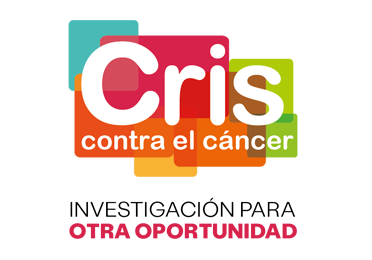
Despite the tremendous progress made in improving outcomes and survival rates for patients suffering from breast cancer, this tumor type is still the leading cause of cancer death among women worldwide, claiming more than half a million lives alone in 2018*. Chemotherapeutic agents known as taxanes, that include paclitaxel, are standard-of-care therapies against metastatic breast cancer. While they show clinical benefit in some patients, others unfortunately do not respond to these treatments.
Around 70% of breast tumors have constitutively activated survival signals, including mutations in the phosphoinositide 3-kinase (PI3K)/AKT signaling pathway, and ultimately resist standard anti-cancer medicines. Major research efforts focus on identifying and developing novel therapeutic strategies to reverse resistance in patients, as well as seek out biomarkers that can more precisely predict those patients who would be most likely to benefit towards better guiding treatment decision making.
Published open access and ahead of print last week in the flagship publication of the European Society for Medical Oncology (ESMO), Annals of Oncology, a study** first-authored by Nicholas C. Turner, the Breast Unit of the Royal Marsden NHS Foundation Trust, Institute of Cancer Research (London, UK), reveals the results of the phase 1/2 BEECH clinical trial: Investigating Safety, Tolerability and Efficacy of AZD5363 when Combined with Paclitaxel in Breast Cancer Patients (NCT01625286).
Co-authored by VHIO’s Mafalda Oliveira, Medical Oncologist and Clinical Investigator of our Breast Cancer Group directed by Cristina Saura, in collaboration with other leading researchers, this multi-center undertaking for the first time evidences the safety of combining paclitaxel with the AKT 1-3 inhibitor capivasertib in estrogen receptor-positive (ER+)/human epidermal growth factor receptor 2-negative (HER2-) advanced or metastatic breast cancer.
The study consisted of two parts: first, a phase 1b safety run-in aimed at determining the dosing schedule of capivasertib combined with paclitaxel; and second, a double-blind phase 2 expansion to gauge the clinical benefit of capivasertip plus paclitaxel in both ER+/HER2- advanced or metastatic breast cancer patients, as well as a PIK3CA mutant patient population, the gene encoding for the catalytic subunit of PI3K.
More specifically, the first (part A) assessed 44 patients and established 400mg of intermittent capivasertib bi-daily administration (4 days on/3 days off), as the recommended dosing schedule for the second part (B). Diarrhea, nausea and asthenia were reported as the most common adverse events.
For part B, 110 patients were randomized in the paclitaxel with capivasertib and the paclitaxel plus placebo arms (54 and 56 patients respectively). Patients were stratified based on the presence or absence of mutations in PIK3CA. 51 (46%) of them bore PIK3CA mutant tumors, and 59 (54%) had PIK3CA wild-type breast cancers.
The authors reported a similar progression-free survival (PFS) time for both groups. The most common adverse events observed were diarrhea, nausea and alopecia, with more patients suffering from severe side effects in the capivasertib group than in the placebo, 28 (52%) vs. 11 (20%), respectively.
Commenting for VHIO communications, Mafalda Oliveira, co-and last author of this publication, explained, “Toxicity was effectively managed through dose modifications and supportive care, pointing to the capivasertib and paclitaxel combination as a well-tolerated treatment approach. Importantly, the discontinuation rate was low and there was no marked impact on the tolerability and dose intensity of paclitaxel.”
Considering the small number of patients in each group, as well as the fact that screening was not performed for other genomic alterations in the PI3K/PTEN/AKT pathway, or for compensatory activation of the pathway via estrogen receptor (ER) signaling, the potential treatment benefit of this combination in ER+/HER2- advanced or metastatic breast cancer patients might be greater.
Mafalda also observed, “The BEECH trial was conducted in ER+ breast tumors without concomitant endocrine therapy and inclusion criteria did not mandate for endocrine-resistance patients. Possible cross-talk between ER and PI3K/AKT pathways has been previously reported and may have bypassed AKT inhibition and reduced the activity of capivasertib and paclitaxel combination in this subtype of breast cancer.”
She continued, “We are now conducting other collaborative studies combining capivasertib with endocrine therapy against ER+/HER2- metastatic breast cancers, as well as assessing its combination with taxanes in the triple-negative setting.”
Interestingly, in a BEECH trial sub-study*** published back-to-back in Annals of Oncology, first-authored by Sarah Hrebien, Breast Cancer Now Centre of the Institute of Cancer Research (London, UK), findings reported that the amount of circulating-tumor DNA upon treatment reflects the response of the tumor and anticipates clinical benefit. Tumors that respond to therapy exhibit lower levels of ctDNA after the initiation of treatment, whereas those showing resistance maintain or quickly recuperate their initial amounts.
In the development cohort (samples from Part A), the authors showed that ctDNA was reduced even after 8 days’ treatment and established 4 weeks as the optimal time-point to predict PFS from early ctDNA dynamics.
In the validation cohort (Part B), they subsequently evidenced that patients with suppressed ctDNA at 4 weeks exhibit longer PFS than those with higher levels of ctDNA (11.1 vs. 6.4 months, respectively), suggesting that the detection of a decrease in the amount of ctDNA at the beginning of the treatment can be used to predict tumor response.
Their data also reveal that patients receiving the combination of capivasertib and paclitaxel do not show a greater reduction of ctDNA compared with those in the paclitaxel plus placebo arm, independently of PIK3CA status. This indicates that the addition of the AKT inhibitor does not improve outcomes for either ER+/HER2- advanced or metastatic breast cancer patients or PIK3CA mutant carriers. These findings are consistent with those reported by the BEECH trial.
Mafalda concluded, “In our study we have prospectively validated early ctDNA evolution as an indicator of treatment efficacy. This approach therefore shows promise in helping to accelerate early clinical drug development as well as facilitate a more rapid adjustment of therapy during disease progression.”
###
* International Agency for Research on Cancer 2019. GLOBOCAN 2018. http://gco.iarc.fr/
** Turner NC, Alarcón E, Armstrong AC, Philco M, LópezChuken YA, Sablin MP, Tamura K, Gómez Villanueva A, Pérez-Fidalgo JA, Cheung SYA, Corcoran C, Cullberg M, Davies BR, de Bruin EC, Foxley A, Lindemann JPO, Maudsley R, Moschetta M, Outhwaite E, Pass M, Rugman P, Schiavon G, Oliveira M. BEECH: A dose-finding run-in followed by a randomised phase 2 study assessing the efficacy of AKT inhibitor capivasertib (AZD5363) combined with paclitaxel in patients with oestrogen receptor-positive advanced or metastatic breast cancer, and in a PIK3CA mutant sub-population. Ann Oncol. 2019 Mar 12.
*** Hrebien S, Citi V, Garcia-Murillas I, Cutts R, Fenwick K, Kozarewa I, McEwen R, Ratnayake J, Maudsley R, Carr TH, de Bruin EC, Schiavon G, Oliveira M, Turner NC. Early ctDNA dynamics as a surrogate for progression free survival in advanced breast cancer in the BEECH trial. AnnOncol. 2019 Mar 12.











